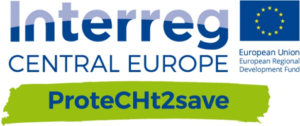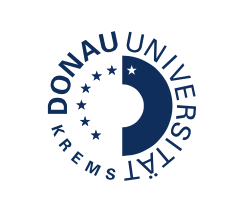Do you have what it takes to lead a Cultural Heritage Rescue Team?
Play CHRT: Vltava Rising, and learn how to save a variety of real Central European art objects and artifacts before flooding inundates a palace museum in Prague-Troja, Czechia.
Free to play on the App Store and Google Play.
Quick facts:
- Commissioned as part of EU Interreg Central Europe’s ProteCHt2save project
- Utilizes deliverables and lessons-learned from the two-year project regarding the proper safeguarding and emergency evacuation of cultural heritage objects during calamitous events such as flooding.
- In-game curated museum of over 30 items, representing real-world cultural heritage objects and artworks from the seven Central European ProteCHt2save partner nations.
- Fun and engaging way to learn why museums, local and regional governments, and citizens-at-large must have plans in place—before a crisis—to safeguard cultural heritage.
- Learn:
- What enablers must be in place before cultural heritage objects can be safely removed from a museum
- The tangible steps that can be taken to protect moveable and immovable cultural heritage
- How to properly package museum objects for transportation
Summary:
In CHRT: Vltava Rising, the player is tasked with saving endangered heritage collected from throughout the entire Central European region in an in-game special exhibit museum.
As part of EU Interreg Central Europe’s ProteCHt2save project, CHRT: Vltava Rising puts the player in charge of a Cultural Heritage Rescue Team (CHRT) brought to Prague-Troja, Czechia three days before a major flooding event is due to hit the city.
The player first learns about an Emergency Operations Center (EOC), the organizations and offices typically represented there, and what types of permissions are required for a CHRT to operate in a crisis environment. After receiving authorization to operate from the EOC, the team then enters the fictional Béla Palace (loosely based on the actual Troja Palace in Prague-Troja) and completes a series of tasks that are critical in the proper safeguarding and evacuation of cultural heritage objects.
This game represents many of the deliverables, products, and lessons learned over the course of the 24-month ProteCHt2save project sponsored by EU Interreg Central Europe. They are blended into the game play so that the player can learn more about what (s)he can do to safeguard cultural heritage in their own town, region, or nation… BEFORE a crisis occurs.
Thanks to the cooperation of all of the ProteCHt2save project partners, this game contains representations of actual cultural heritage objects from throughout their regions. The artifacts are curated in virtual exhibits that highlight the rich heritage of the Central European Region. Three virtual exhibits highlight the prehistory and Roman life, everyday life, and religious life of Central European partner nations.
For more information on the entire EU Interreg ProteCHt2save project, go to the project website.
Art and artifact highlights include:
Artworks by artists from the Krems an der Donau (Wachau) region of Austria (holdings of the Belvedere Museum in Vienna, AT) in addition to historical documents from Melk Abbey
Objects from museums in Kastela, Croatia
And because immovable cultural heritage must also be represented, the in-game Béla Palace is based on the real-life Troja Palace in the Troja District of Prague, Czechia
A variety of artworks and cultural heritage objects from local museums such as the Janus Pannonius Museum, representing the Baranya District of Hungary.
Frescos from Pallazo Schifanoia, Ferrara, Italy
Objects from the historic Church of the Exaltation of the Holy Cross, in the Bielsko-Biala region of Poland
A variety of objects from the Regional Museum in Kocevje, Slovenia
Game designer and developer: Kim Himmer
Kimberly Himmer is President and Lead Game Designer and Developer at Articulated Python, a company dedicated to the design and production of Serious Games for adult education and training. She is passionate about cultural heritage protection; and has spent the past five years collaborating with experts in the field, as well as participating in a variety of related international military and civilian exercises and conferences in order to build her knowledge base. She is known for designing and developing a cultural property protection (CPP) training game prototype in 2016, Cultural Recon, which garnered attention from a variety of U.S. military, NATO, and international military personnel—in addition to UNESCO—as an innovative potential training product for deploying military personnel. She is a regular speaker at U.S. and international conferences on topics such as game-based CPP training as well as the general benefits of game-based training for the adult workforce.
For further information and interview requests, contact Kim directly:
Kimberly.Himmer@ArticulatedPython.com
+1 202-460-6427
Articulated Python became know in Cultural Property Protection (CPP) circles in 2016, after the release of Cultural Recon, a video game prototype designed and developed to train military personnel in the proper identification, handling, and protection of cultural property in war zones. This game garnered attention from a U.S. and international military personnel, as well as NATO and UNESCO personnel. Keith and Kim Himmer, the two principals at the company, have continued to participate in, and contribute to, CPP training, and international discussions on the protection of cultural heritage in conflict and crisis zones.




